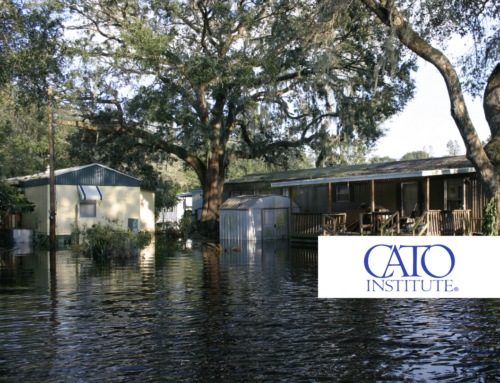Congress has split town leaving an important deal unfinished. Yes, the debt ceiling got raised, but there’s another important piece of legislation wasn’t finalized and will cost $1 billion or more in lost revenue. The authorizing legislation for the Federal Aviation Administration (FAA) and the nation’s air program expired on July 22. Both bodies passed an extension, but they were different, and no final agreement was reached. The House version included modest changes to a wasteful subsidy program called the Essential Air Service (EAS) and the Senate version didn’t.
While lawmakers are enjoying their August recess the FAA finds itself in a partial shutdown, forced to furlough some 4,000 employees and place hundreds of construction projects on hold at airports across the nation, idling as many as 80,000 construction workers. In addition, the program is losing $30 million each day, as the FAA is no longer authorized to collect the ticket tax that funds construction projects and other FAA operations. If Congress waits until it returns in September to resolve this issue, the losses are likely to exceed $1 billion in foregone revenue.
The EAS is a wasteful program. We do not believe the reforms in the House extension go nearly far enough. But some reform is better than none. The Senate should accept the House legislation, which makes modest changes to a program that should be largely eliminated anyway, and get these workers back on the job as soon as possible.
Senate Leader Harry Reid (D-NV), whose state has an airport that would lose EAS funding under the House bill, agreed that it was time to get this done. He was willing to trade some subsidies for Nevada to get the program back up and running. But other Democrats – lead by Sen. Rockefeller (D-WV) – refused to go along. So the shut-down goes on.
Sen. Rockefeller’s opposition is curious, given that the Senate-passed reauthorization bill he voted for (not to be confused with the extension that is currently at issue) contains the same provision as the House extension bill to eliminate EAS subsidies for airports that are within 90 miles of a hub airport, which would have the same effect of eliminating subsidies for Morgantown’s (WV) airport.
Background
Since September 2007, when the last aviation reauthorization – called Vision 100 – expired, Congress has passed a series of 20 short-term extensions to the program that have kept it operating. Though each chamber has passed a version of the longer-term extension, there are several thorny issues yet to be worked out, including funding levels, broader EAS reform, and most importantly, over a disagreement about rules governing the unionization of airline workers.
Things have fallen apart on the 21st try to pass a short-term extension.
The House and Senate are currently at odds over a provision that would make modest changes to a program called the Essential Air Service (EAS). EAS was created in the wake of airline deregulation in the 1970’s, largely out of a fear that the airlines, now free to fly routes of their choosing, would pull out of smaller, rural airports. EAS subsidizes airlines that fly to these smaller airports. To qualify, an airport must have been receiving scheduled air service in October 1978; be more than 70 miles from the nearest medium or large hub airport; and not require a subsidy of more than $200 per person, unless the airport is 210 or more miles from an airport which then allows for an unlimited subsidy.
The House extension would bump that up to 90 miles from the nearest airport, and not allow any subsidies for routes that require more than $1,000 per passenger. These changes would disqualify 13 airports from receiving EAS subsidies.
Ten because of the change in distance from 70 to 90 miles:
- Lancaster, PA
- Johnstown, PA
- Bradford, PA
- Oil City, PA
- Morgantown, WV
- Athens, GA
- Jamestown, NY
- Hagerstown, MD
- Jackson, TN
- Jonesboro, AR
And three becasuse of the subsidy cap:
- Ely, NV ($3,720/pass.)
- Alamogardo/Hollman AFB, NM ($1,563)
- Glendive, MT ($1,358)
In all, these changes would save taxpayers a little over $16 million this year. The EAS program in total cost taxpayers about $200 million in FY2010, about one-quarter of which comes from over-flight fees (paid when flights cross US air space, but don’t land in the US), and the rest comes from appropriations. In 1997, the program cost only $26 million. The number of qualifying airports has increased as well. Approximately 150 airports currently receive EAS subsidies, 45 of those are in Alaska, up from a total of about 95 in 1997. This program should be eliminated in every state save for Alaska, where the roads are few (or non-existent) and the distances are great. Instead, proponents have successfully expanded the program, increasing its funding nearly 8-fold in the past 14 years.











Get Social